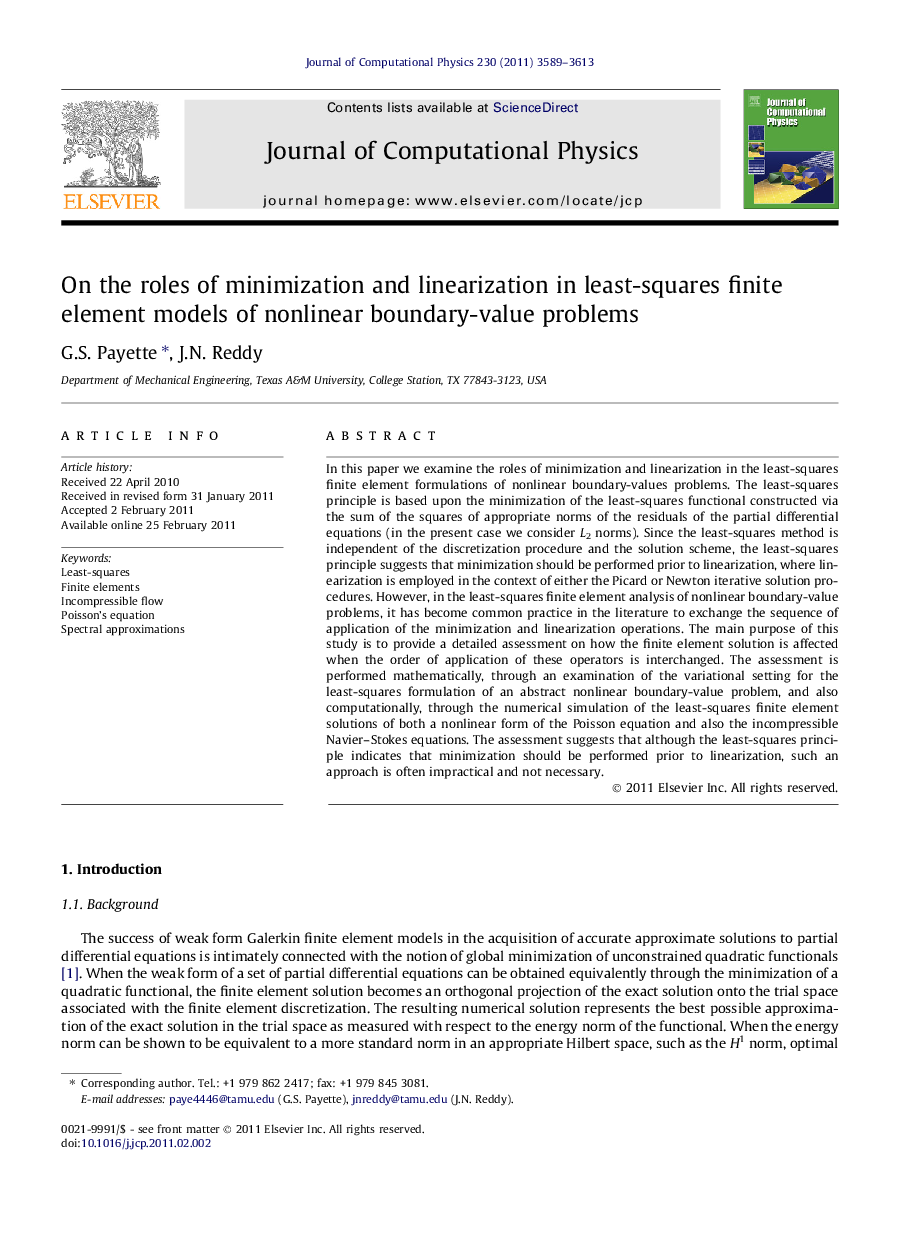| Article ID | Journal | Published Year | Pages | File Type |
|---|---|---|---|---|
| 519798 | Journal of Computational Physics | 2011 | 25 Pages |
In this paper we examine the roles of minimization and linearization in the least-squares finite element formulations of nonlinear boundary-values problems. The least-squares principle is based upon the minimization of the least-squares functional constructed via the sum of the squares of appropriate norms of the residuals of the partial differential equations (in the present case we consider L2 norms). Since the least-squares method is independent of the discretization procedure and the solution scheme, the least-squares principle suggests that minimization should be performed prior to linearization, where linearization is employed in the context of either the Picard or Newton iterative solution procedures. However, in the least-squares finite element analysis of nonlinear boundary-value problems, it has become common practice in the literature to exchange the sequence of application of the minimization and linearization operations. The main purpose of this study is to provide a detailed assessment on how the finite element solution is affected when the order of application of these operators is interchanged. The assessment is performed mathematically, through an examination of the variational setting for the least-squares formulation of an abstract nonlinear boundary-value problem, and also computationally, through the numerical simulation of the least-squares finite element solutions of both a nonlinear form of the Poisson equation and also the incompressible Navier–Stokes equations. The assessment suggests that although the least-squares principle indicates that minimization should be performed prior to linearization, such an approach is often impractical and not necessary.
